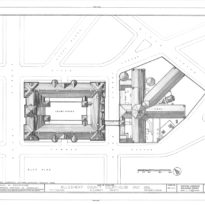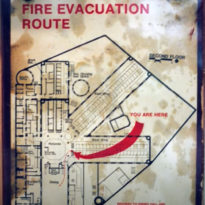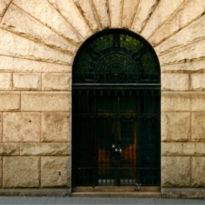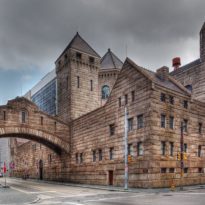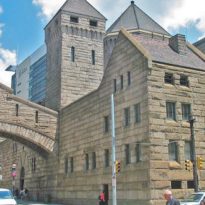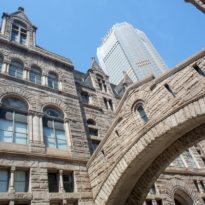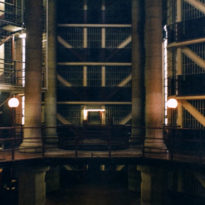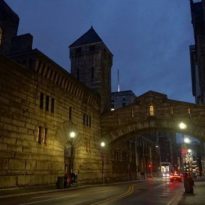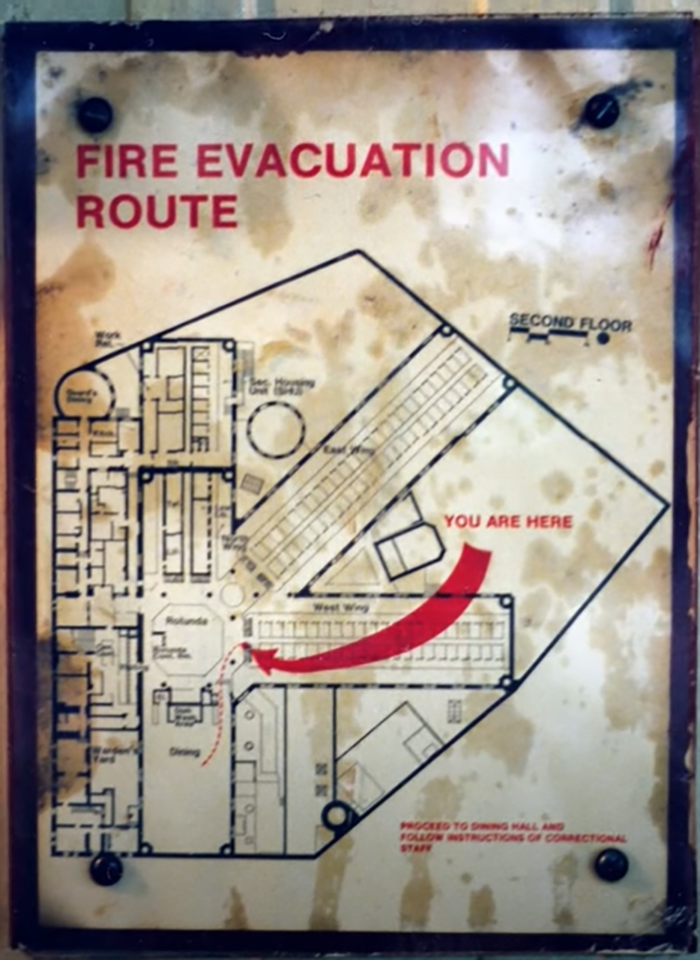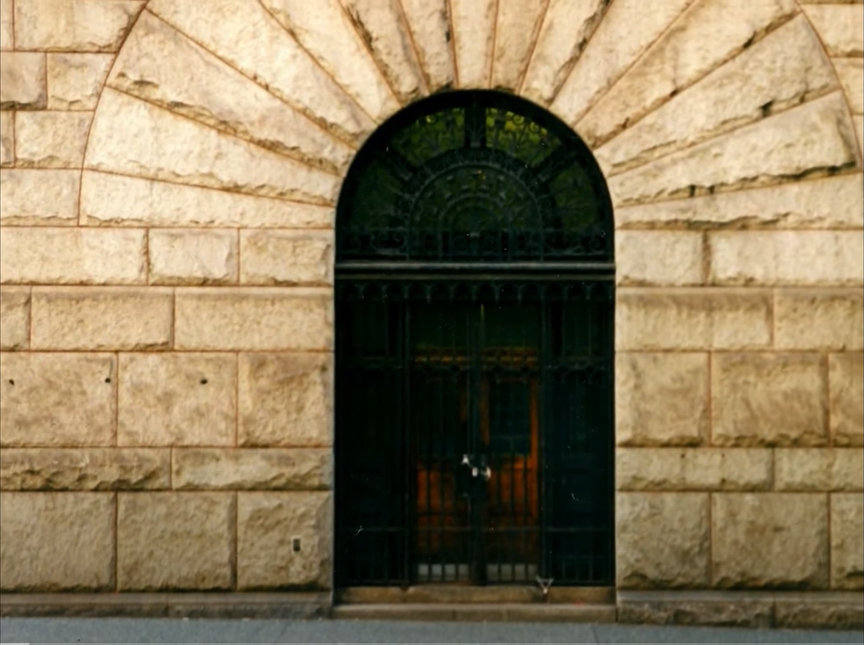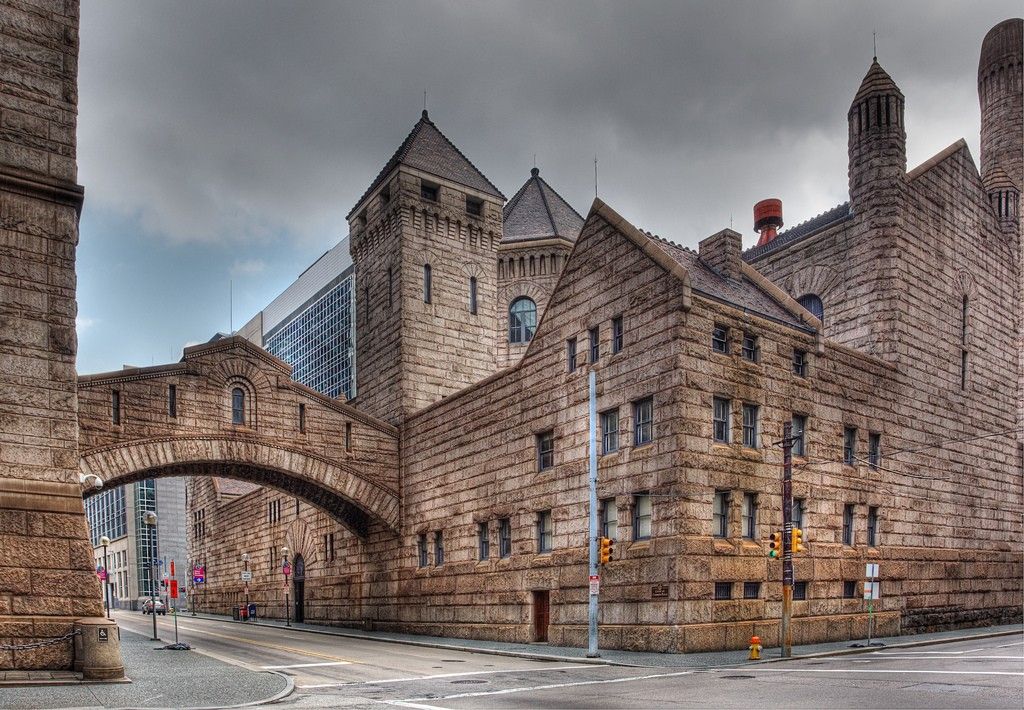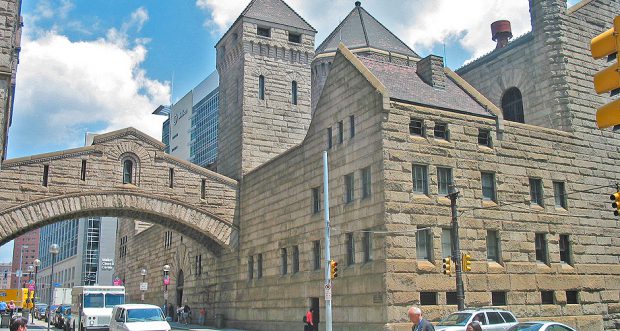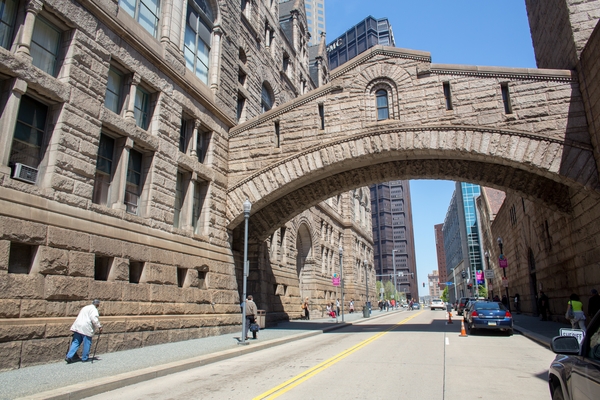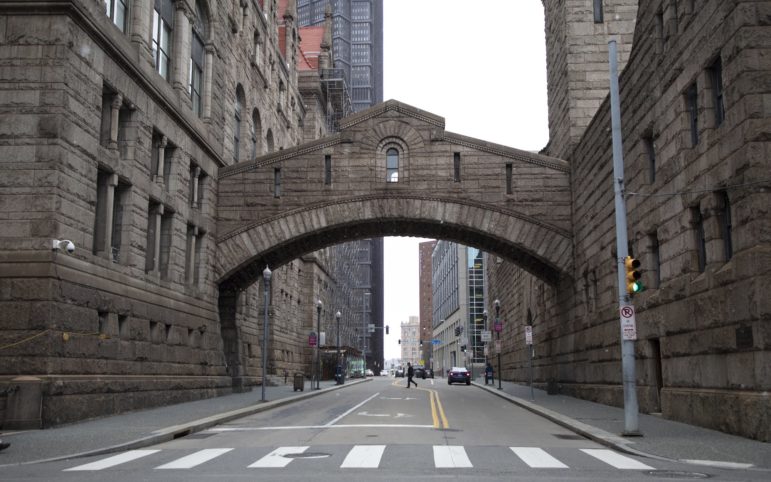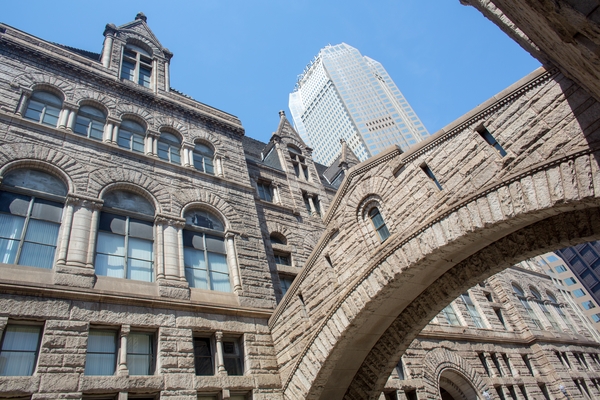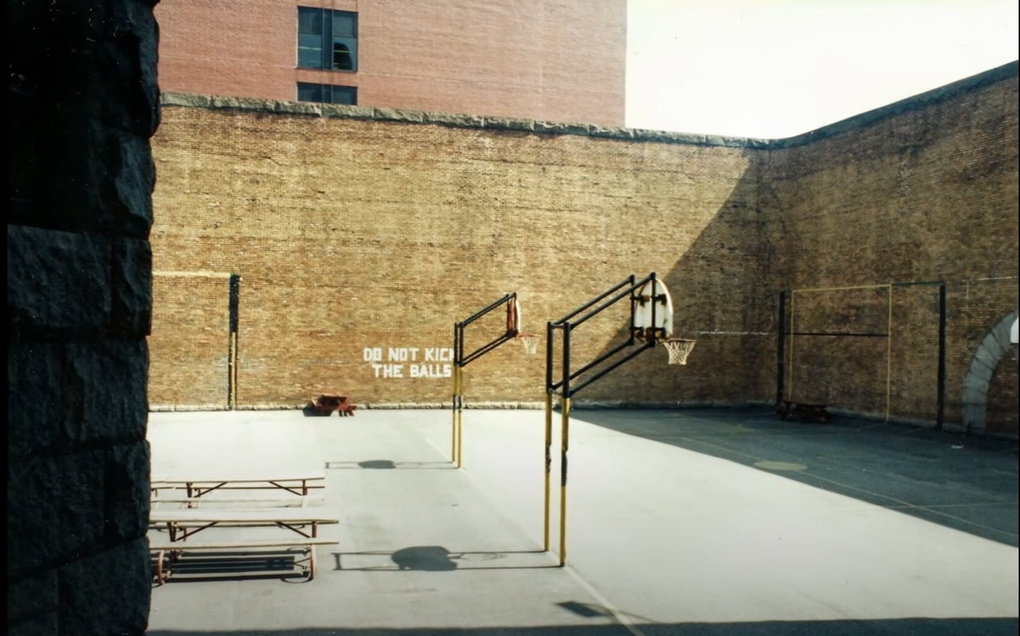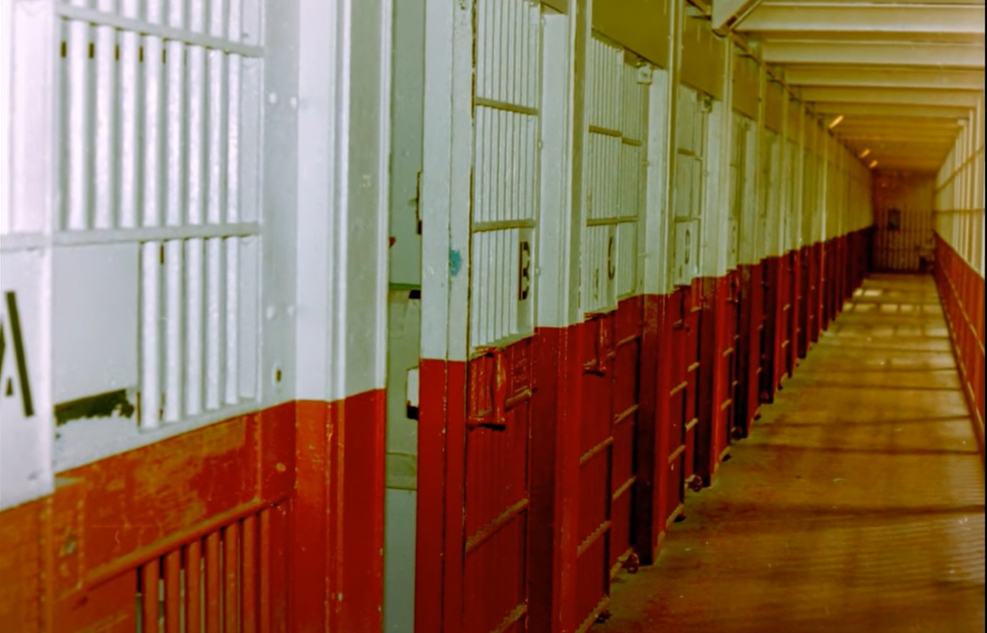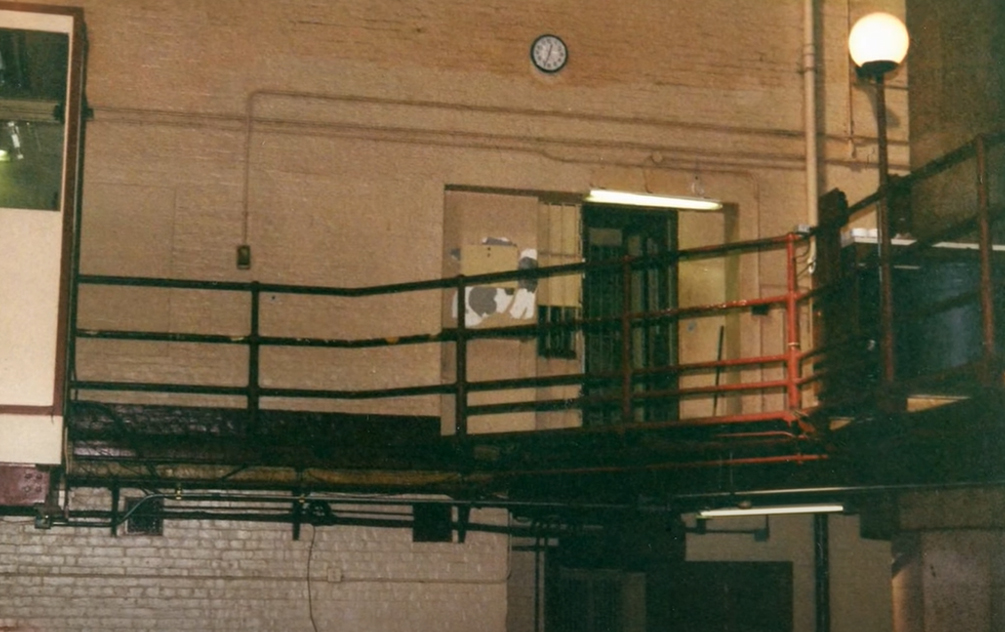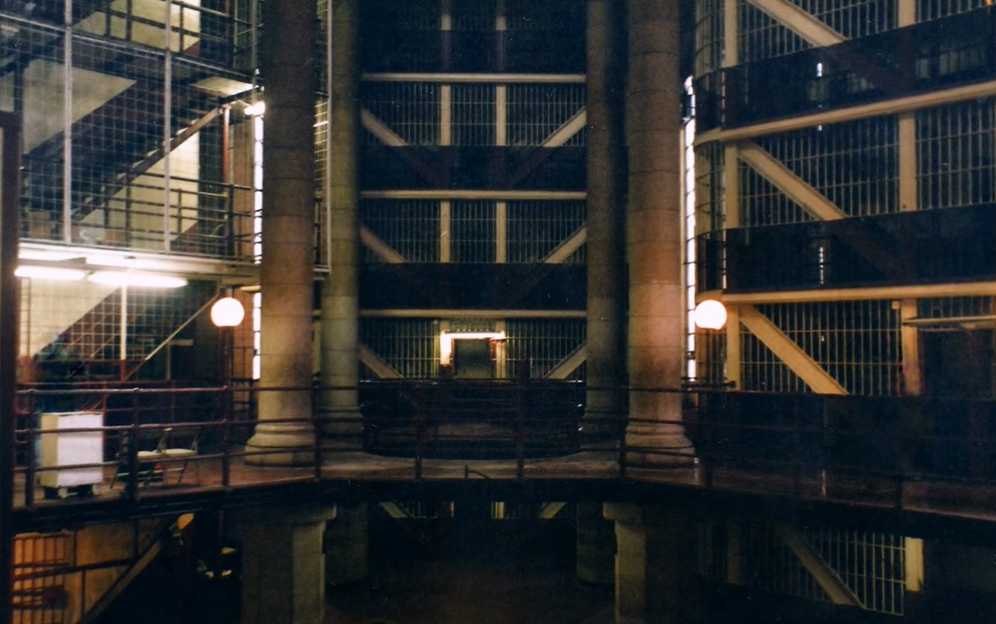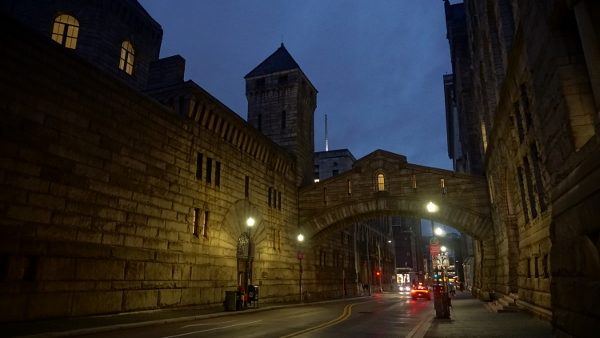Allegheny County Jail
Concept
The second part of Richardson’s design for the Allegheny County Courthouse was a prison, physically connected by a bridge that allowed newly-convicted criminals to be moved to their cells without ever having to be protected from escaping when being moved to the jail. The bridge’s design was based on Venice’s famous Bridge of Sighs that connected Venice’s “New Prison” to the interrogation rooms in the Doge’s Palace.
Location
436 Grant Street, Pittsburgh, PA, United States
Spaces
For efficiency, daylighting, and observation, Richardson originally designed the jail cells into a cross plan of three double-loaded corridors that connected at an octagonal hub with a control desk. He wrapped the entire site with a high granite wall and then placed the three prison wings within this space, with the fourth arm of the cross planned to house all of the administrative space located directly across the street from the courthouse. The exterior space that remained was used for exercise ground for the inmates.
Materials
Because he had separated the Jail from the Courthouse, Richardson felt he was freed from the conventional formal expectations that allowed him to continue with his search for a modern American aesthetic, that he had begun with the design of the Courthouse‘s courtyard elevations. Richardson’s ‘functional formalism’ produced one of the most innovative and modern-looking buildings of the nineteenth century. He continued to use the pink Milford granite rock-faced ashlar walls with red mortar in the jail’s elevations, but gone were the alternating bands of narrow and wide courses. Instead, he chose to subtly change the height of the coursing in each story in an attempt to impart a sense of false perspective to the elevations. With each course of granite seemingly having the same height, one’s eye was not diverted to the surface alternation so that it could instead comprehend the “wholeness” of the mass of the building. Gone too were the continuous sillcourses that in the past had articulated his stone masses into horizontal layers. In essence, Richardson’s mass consisted of the granite wall with a constant height that wrapped the site. Functions, such as the wings of the jail and watchtowers simply ran up to these walls and then Richardson allowed the granite surface to extend continuous beyond the wall’s height to enclose these other spaces, thereby allowing one to read each of the building’s functions from the building’s exterior. The only openings in the wall occur in the jail’s front, across the street from the Courthouse, that were needed by the building’s public spaces. This includes Richardson trademarked Syrian-arched doorway with colossal voussoirs. Pugin would have approved of Richardson expression of the building’s functions.
Perhaps the most influential detail of this design is how he detailed the windows in the jailblocks. As the double-loaded cells were stacked four levels high, the exterior walls were pulled far enough away from the cells so that they were physically independent of the walls, i.e., the jail “stacks” occupied the four-story tall space. This also allowed the guards to watch the prisoners from both sides of the cells. To daylight this space, Richardson carved four-story high windows into the exterior walls that were supported by a four-story high, unbroken arcade. This appears to have been one of the earliest use of a continuous, multistoried arcade to group the windows in a multistoried building (i.e., skyscraper).
This detail bore a marked resemblance to the Beacon Hill Reservoir in Boston designed in 1849, where the granite wall surfaces were also left unstriated. Even the reservoir’s machiolated cornice was repeated by Richardson in the jail’s tower and octagonal central pavilion.
Video
